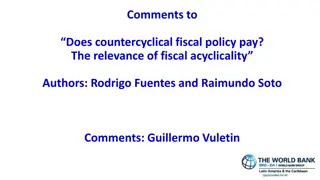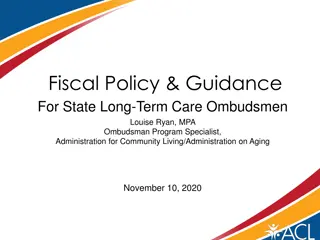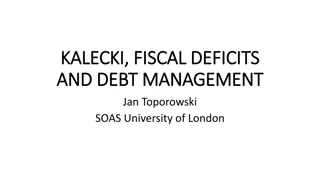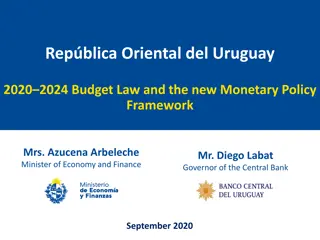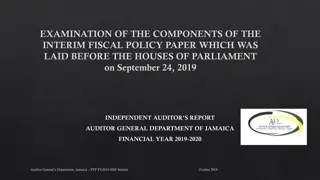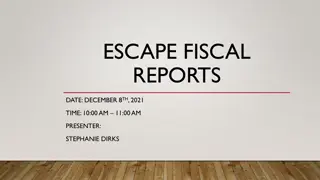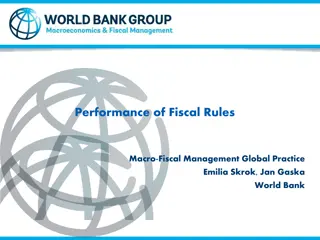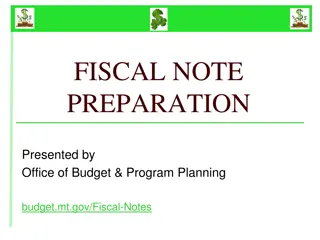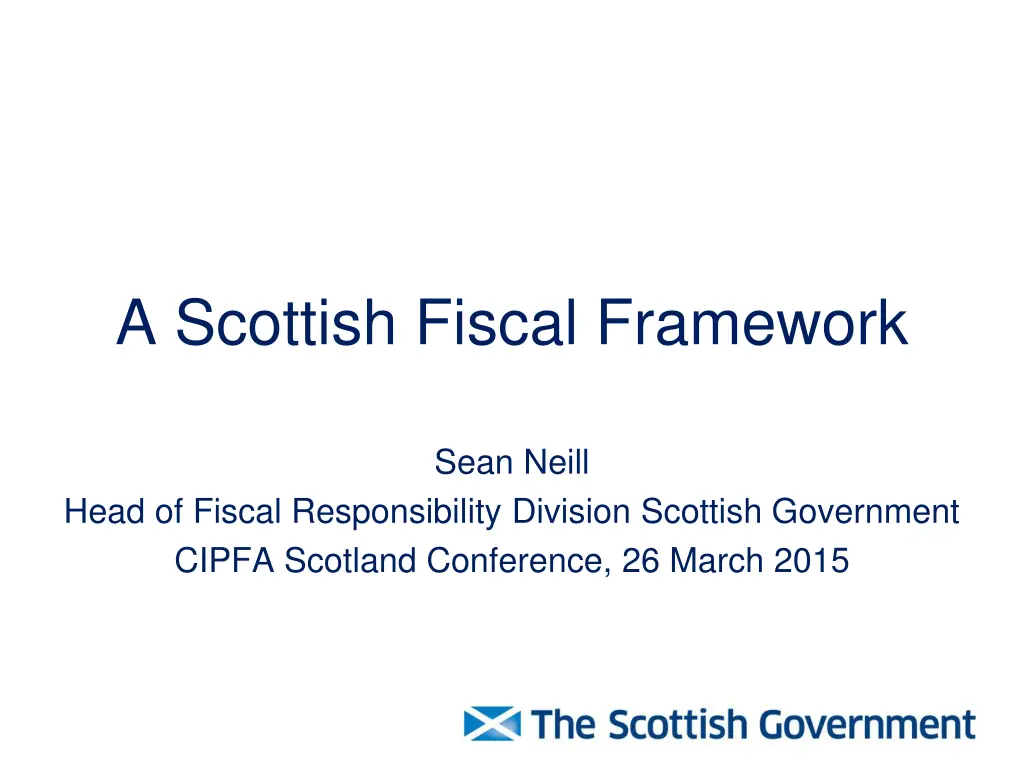
Scottish Fiscal Framework: Elements, Funding Model, and Act 2012
Explore the Scottish fiscal framework, including elements like independent fiscal institutions and sustainable funding models, under the Scotland Act 2012. Learn about the principles, tools, and rules guiding fiscal responsibilities within the framework for Scotland's economic development and accountability.
Download Presentation

Please find below an Image/Link to download the presentation.
The content on the website is provided AS IS for your information and personal use only. It may not be sold, licensed, or shared on other websites without obtaining consent from the author. If you encounter any issues during the download, it is possible that the publisher has removed the file from their server.
You are allowed to download the files provided on this website for personal or commercial use, subject to the condition that they are used lawfully. All files are the property of their respective owners.
The content on the website is provided AS IS for your information and personal use only. It may not be sold, licensed, or shared on other websites without obtaining consent from the author.
E N D
Presentation Transcript
A Scottish Fiscal Framework Sean Neill Head of Fiscal Responsibility Division Scottish Government CIPFA Scotland Conference, 26 March 2015
Elements of a Fiscal Framework Elements of a Scottish fiscal framework Independent fiscal institutions Consistency with UK fiscal policy Sustainable funding model Tools for managing risks Credible fiscal rules A well designed fiscal framework will ensure that further devolution provides the right incentives & increases accountability - linking Scottish Government budget to Scottish economic performance Fiscal framework must be robust, cohesive and provide the flexibility to develop and deliver distinct Scottish policies within the UK fiscal framework
A Scottish Fiscal Framework What is in a fiscal framework? What does the Scottish Governments fiscal framework look like under Scotland Act 2012? What did the Smith Commission say? What does this mean for the Scottish Government and the design of a new fiscal framework? Discussion
Scotland Act 2012 Measure Replace Stamp Duty Land Tax with Land and Buildings Transaction Tax (LBTT) Replace UK Landfill Tax with Scottish Landfill Tax (SLfT) Start Revenue estimate (2015-16) 2015-16 c. 380m 2015-16 c. 117m Scottish Rate of Income Tax 2016-17 c. 4.5 bn if rate set at 10p/ Power to devolve more taxes Annual - 10% of capital budget( 304m), Aggregate limit - 2.2bn Annual - 200m Aggregate - 500m One-year agreement for devolved taxes Principles agreed for SRIT Capital borrowing 2015-16 Revenue borrowing 2015-16 2015-16; 2016-17 Block grant adjustment
Fiscal Framework 2012 Sustainable funding model Over 80% of funding from block grant Tax receipts from 2 devolved taxes and SRIT Block grant adjustment Tools for managing risks Cash reserve Consequential allocation Capital borrowing provision 10% CDEL up to 2.2bn cumulative Borrowing for forecast errors - 200m pa - 500m cumulative Carry forward unspent balances of 0.5% RDEL and 1.5% CDEL Credible fiscal rules Linked to SA 1998 SG has to produce a balanced budget Revenue funded investment subject to self-imposed rule (annual costs within 5% of budget) Independent fiscal institutions Role of the Scottish Fiscal Commission in providing assurance on the robustness of SG tax forecasts Consistency with UK fiscal policy Part of overall UK fiscal framework
Scotland Act 2012 Funding Model 0.5bn c0.5bn
Smith Recommendations Fiscal Framework Agreed by the Scottish and UK Governments Part of a UK Fiscal Framework Underpinned by no detriment principle Welfare Tax Borrowing Rates and bands of Income Tax Assignment of 10p/ 1 VAT raised in Scotland Air Passenger Duty Aggregates Levy Benefits for carers, disabled people and those who are ill Benefits included in the Regulated Social Fund Powers to create new benefits and top up reserved benefits Revenue borrowing to ensure stability and provide safeguards to public spending in the event of economic shocks Capital borrowing to support capital investment and to consider how this could fit with a prudential borrowing regime.
Financial Impact of Smith Revenue Expenditure
Revised Fiscal Framework Sustainable funding model Barnett Formula will continue to operate No detriment as a result of the decision to devolve further power No detriment as a result of UK or Scottish Government policy decisions post-Smith Scottish Government should have powers to support capital investment Tools for managing risks The UK Government will manage risks which affect the whole of the UK The Scottish Government should bear economic responsibility for its policy decisions Credible fiscal rules Updated Scottish Fiscal Framework consistent with UK Fiscal Framework Borrowing powers should be consistent with fiscal rules Independent fiscal institutions Scottish parliament should expand and strengthen independent scrutiny
How to design a new fiscal framework for Scotland Step 1: Smith Agreement sets out new tax/spending powers Step 2: Smith Agreement summarises where risks are held Step 3: Evolve funding model to reflect new powers/risks Step 4: Determine tools for SG to manage these powers/risks Step 5: Fiscal rules and institutions to ensure sustainable outcome Powers Risks Funding Tools Rules
Next steps UKG continues to prepare the Bill for introduction to the UK Parliament 22 Jan Draft clauses published 07 May UK General Election TBC Queen s speech Discussions on non-legislative areas of the Smith Commission Agreement need to move in parallel Technical discussions with HMT Stakeholder engagement



